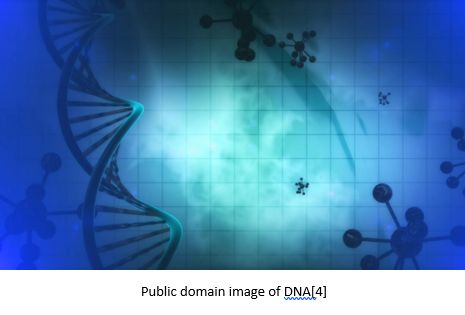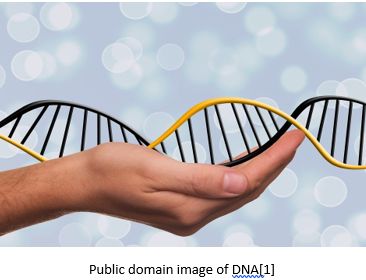Genetic Genealogy (Part 2): Tools and Features of DNA Testing Companies
 22
22Dec

It can be a challenge knowing which DNA testing company you should use for your DNA test. You need to consider not only which company is the biggest, but also what features and tools they have beyond just ethnicity percentages. It may also be important to you whether the company has an international reach. Below is an overview of important information regarding genetic genealogy and the tools and features of several major DNA testing companies.
Genetic Genealogy Part 2
As of this post, Ancestry has the largest database of DNA test takers with over 18 million tests.[2] For those hoping to cast the widest net and find the most matches, they should consider using Ancestry. However, users should note that Ancestry does not allow you to interact with your DNA matches in all the same ways as the other testing companies.
Ancestry generally sorts your DNA matches according to estimated relationships. Depending on how many centimorgans (unit of length of DNA) you share with a match, they may be categorized as a 1st/2nd cousin or a 3rd/4th cousin and so on. If the match has a family tree linked to their results, you can view their tree. Ancestry also allows you to see other DNA matches which both you and the selected match share.
DNA matches can be further sorted by the user according to group. Genetic genealogists recommend you start by sorting matches based on how they are related. For example, if you have found three matches that are all related to you through your paternal grandfather, consider making them a group. Groups are shown by a common colored-dot next to their names. Once you have enough of these groups, it becomes easier to tell how a new or unknown match may be related to you because you can see with which group the new match shares DNA.
To get the most out of your test at Ancestry, consider linking a public family tree to your DNA results. Building a family tree and linking it to the DNA results allows you to use Ancestry’s ThruLines tool. ThruLines helps you see how DNA matches are related to you without you having to manually sort your matches. ThruLines automatically crawls the family trees of your matches and finds the common ancestors between you and them. Then, it displays your DNA matches according to which ancestor they have in common with you. When you have questions on a specific person or line in your tree, it is nice to have ThruLines find your DNA matches who also descend from that person or line.
Ancestry, like the other DNA companies, allows you to download your raw DNA results. Those results can then be uploaded to most of the other DNA databases. Unlike the other DNA companies, Ancestry does not allow you to upload results from other companies. This is something to think about. If you test with Ancestry, you can still be a part of the MyHeritage, FamilyTreeDNA, and GEDmatch databases. However, if you test with another company, you cannot be a part of the Ancestry database.
23andMe
23andMe has the second largest DNA database with over 12 million customers, as of this post[3]. 23andMe has typically been the least focused on the people using it for genealogy. However, they now have many of the same features as the other companies. You can view your DNA matches and see the percent of shared DNA. 23andMe also estimates relationships and provides you with a possible connection, meaning they will suggest which generation may hold the common ancestor. For example, they may suggest that you and one of your matches may share a third-great-grandfather. However, this suggestion is not precise and could be off by a generation or two.
23andMe takes the estimated relationships one step further with their family tree feature. While it is ideal to build your family tree first, even without a family tree, 23andMe will display your strongest DNA matches on your family tree based on the estimated relationships. If their predictions are slightly off, the relationships can then be adjusted.
23andMe also has one of the most important tools for advanced genetic genealogy: chromosome mapping and the ability to compare DNA segments with multiple relatives. This tool allows you to see the segments of DNA that are shared with other relatives and on which chromosome the shared segment is found. This is an essential tool for segment triangulation, which genealogists use to pinpoint the specific ancestor that gave you a particular segment of DNA. To do this, a genealogist finds at least two other people who have a segment of DNA with you and with each other. Then, anyone else who shares that segment of DNA with you and the other two matches must be related to that ancestor.
23andMe is like Ancestry and does not accept DNA uploads from other companies, but it will allow you to download your raw DNA results.
FamilyTreeDNA
FamilyTreeDNA has a smaller database, but it is special for a couple reasons. First, it has more than just autosomal DNA testing. It also has yDNA and mitochondrial DNA databases, though these are separate DNA tests that must be taken. Second, in my experience, it has a decent international base of customers. If I wanted to find cousins in Norway, I would have the best chance with either FamilyTreeDNA or MyHeritage DNA. Last, FamilyTreeDNA allows you to filter your match list by xDNA, something which most of the other databases do not allow.
FamilyTreeDNA is one of the companies that will accept raw DNA results from other companies. While it is free to upload your DNA, several of its features and tools are understandably behind a paywall. All users can see which matches they have “in common with” with other matches and they can also choose to see only the matches that they have “not in common with” a specific match. As an example, you might only want to see matches on your father’s side so you use the “not in common with” tool on a close relative on your mother’s side. This would rule out a great deal of your maternal relatives and leave almost all paternal relatives.
FamilyTreeDNA‘s chromosome mapping tool is behind the paywall, but it functions much like other chromosome mapping tools.

MyHeritage DNA
MyHeritage is one of the leading genealogy and consumer DNA companies. Its database of testers is quite a bit smaller than AncestryDNA or 23andMe, but its quality and size is growing. Its ethnicity estimates and matching algorithms are continually getting better with each new update.
MyHeritage accepts uploaded DNA from other companies and provides the same features behind the paywall as FamilyTreeDNA. MyHeritage’s specialty is its worldwide database. As an international company not based in the United States, MyHeritage successfully markets to other countries. DNA matches can be filtered by location country. This makes it easy to find international cousins. Another unique aspect of MyHeritage’s database is that when you look at shared matches between you and a specific relative, you can also see how much DNA that specific relative shares with the other matches. This extra little bit of information can help things go faster when trying to figure out how you might be related to an unknown relative.
Another feature special to MyHeritage is the Autocluster tool. Clustering matches and interpreting the clusters is one of the important skills of a genetic genealogist. MyHeritage, in partnership with Evert-Jan Blom, provides a tool that automatically clusters matches based on how those matches are related to each other. The clusters represent groups of matches who are related to you through different ancestors, most often grandparents and great-grandparents. One cluster may represent DNA cousins who are related to you specifically through an ancestor on your paternal grandfather’s line. When you have questions on specific parts of your tree, this tool can help you focus on the right cousins. While the tool does the clustering for you, it does not help you identify which ancestral lines each cluster represents.
Like AncestryDNA’s ThruLines, MyHeritage’s Theory of Family Relativity can help you find cousins, even distance cousins, who may be related to you. These tools often provide good hints and clues, but it is important to verify the connections by analyzing documentary evidence.
GEDmatch
GEDmatch is a smaller database but with many powerful tools that can help sort and group DNA matches. GEDmatch does not do their own testing, they require you to upload results from another company, which is free. Their free tools allow you to see DNA matches, see shared matches, compare segment information to other matches, compare segments of multiple matches in a 3D Chromosome browser, and compare xDNA of matches. Like MyHeritage, GEDmatch allows you to see how much DNA other matches share with each other.
GEDmatch has a number of exciting tools behind a paywall for advanced genetic genealogy. Their tools allow you to search for specific segments among matches, to create partial DNA results for deceased individuals, and to compare family trees of DNA matches, among other things.
GEDmatch has had problems where many users have felt that the terms of use for their DNA data have been breached. Several years ago, GEDmatch gave law enforcement access to their database to solve serious crimes without notifying the users. Afterwards, they notified users that their DNA would only be available to police for certain violent crimes. Later, they expanded what constituted a serious crime, which they felt was necessary to protect the public. Now, they allow their users the option to opt in to law enforcement access, rather than to have to opt out. They were also recently bought by a research company which updated their terms again. They seem to have settled on reasonable terms where users can designate whether their DNA can be used to try to solve cold cases or identify victims. Many people are also supportive of their DNA’s potential value to help catch violent criminals, to exonerate suspects, or to clear the name of people who may have been wrongfully convicted.
You may wish to test or transfer your autosomal DNA to all of the major websites. Whatever you choose to do, when you receive your results and need assistance, the DNA experts at Price Genealogy can help you use your DNA to solve mysteries in your family tree.
Forrest
[1] https://pixabay.com/illustrations/dna-adn-deoxyribonucleic-acid-dns-1500076/
[2] https://thednageek.com/ancestrydna-breaks-18-million-customers/
[3] https://mediacenter.23andme.com/company/about-us/
[4] https://pixabay.com/illustrations/microbiology-cell-gene-dna-163470/
Have you done genetic genealogy work before? Let us know in a comment below!
